
The Ultimate Moldova Travel Guide
Updated November 2023, The Ultimate Moldova Travel Guide was originally written in May 2018
You’ve arrived, this is off the beaten track Europe! Landlocked and sandwiched nicely between Ukraine and Romania, with a breakaway territory to boot- this is Moldova. Moldova is one of the least visited countries in all of Europe (San Marino and Lichtenstein seem to be the only lesser-visited countries).
But why go if no one else is? That’s part of the beauty. You won’t find hoards of tourists here, the wines are some of the best in Europe, ancient monasteries tucked away in caves, the people friendly, the capital is lively & bustling, your money will take you far as Moldova is a relatively inexpensive destination, and you can even take a step back in time to the Soviet-era with a visit to Transnistria.
I have now visited Moldova twice: once in 2012 and again in 2017, which is a bit unusual as most who visit Moldova do so to tick it off the list with no intent to ever return. Oddly enough I quite enjoy my time in Moldova whether I’m exploring monasteries tucked into cliff-sides, cheersing glasses of wines with new Moldovan friends, eating as many langos at the bazaar I can possibly fit in my mouth, hiking across the rolling hills of Moldova’s countryside, making friends with Transnistrians using my limited Russian language skills, or just wandering the streets of Chișinău.
The blog posts I have come across about Moldova (there are very few!) seem to really fixate on the opinion that it is boring, ugly, harsh, and poor. Of course, if you don’t like the peculiar and utilitarian designs of Soviet architecture you’ll find it ugly if you don’t take the time to befriend a few Moldovans and really try to explore the place you’ll likely find it boring, and well, there’s no hiding that Moldova isn’t the wealthiest nation (however, it’s not the world’s poorest either… just Europe’s).
One difference I noticed from the span between my two visits is that Moldovans seem to be more hopeful about their country’s future than they were in 2012. So if you have a penchant for orthodox churches, meeting friendly locals, sparkling wine, Soviet-style architecture, and breakaway territories you should probably make that trip to Moldova.
Need Travel Insurance and Evacuation Services for Moldova?
Start shopping for travel insurance plans over at IATI Insurance. Readers of the Adventures of Nicole get a 5% discount off your plan.
The Adventures of Nicole partners with Global Rescue to offer the world’s leading medical evacuation and security advisory services. To travel with peace of mind, shop evacuation coverage at Global Rescue.

History
Moldova has had strong ties to Romania throughout history, which traces back to the 1350s when the Principality of Moldavia was founded. The Principality of Moldavia encompassed much of the land that modern-day Moldova (as well as Romania) sits on.
Nearly 200 years later Moldavia would be incorporated into the Ottoman Empire until the early 1800’s when one of many Russo-Turkish Wars would see that Bessarabia is annexed to the Russian Empire. Bessarabia accounts for what is largely modern-day Moldova.
By November 1917 Bessarabia became the Moldavian Democratic Republic and briefly had independence before uniting with Romania in March of 1918. In 1940 Moldavia would be annexed yet again, this time from Romania to the USSR. Moldova remained a republic of the Soviet Union until the dissolution of the USSR in 1991.
On August 27, 1991, Moldova officially declared independence from the Soviet Union. By March of 1992 fighting intensified between Moldova and the region of Transnistria, which would later become the Russian-backed separatist region.
A cease-fire was declared on July 21, 1992, and from that point forward Transnistria has operated as a de facto independent republic called the Pridnestrovian Moldavian Republic. This still to this day remains unresolved.
So that is a half-arsed speedy version of the history of Moldova. If you want a better explanation of the history of Moldova, you could purchase this book.
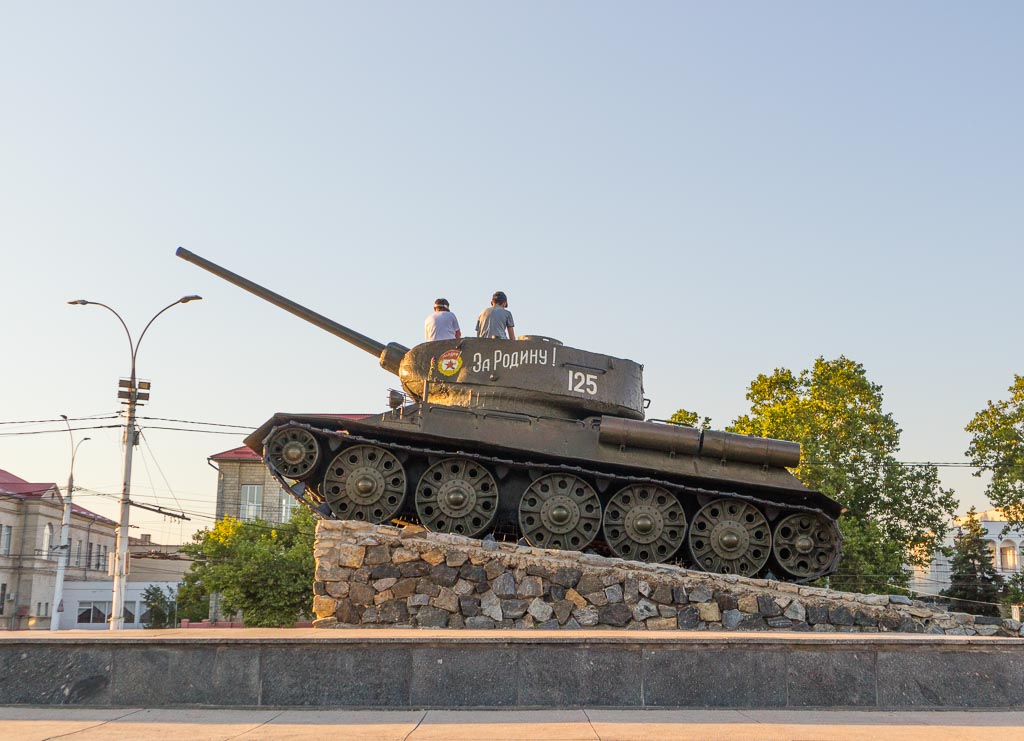
Practical Information
Money
The official currency of Moldova is the Moldovan Leu, abbreviated: MDL. You can easily withdraw leu out of the ATMs around the country or exchange foreign currency at banks. At the time of writing (April 2024) the current exchange rates are:
- $1 USD = 17.63 MDL
- €1 EUR = 19.12 MDL
- 1 RON = 3.84 MDL
- ₴1 UAH= 0.46 MDL
- ₽1 RUB = 0.19 MDL
In the breakaway region of Transnistria, the Transnistrian Ruble is the official currency, abbreviated PRB. Since Transnistria is not recognized as a country (except for in Abkhazia, Republic of Artsakh {formerly Nagorno-Karabakh}, and South Ossetia), its currency is not of any use outside Transnistria.
Make sure to exchange any leftover Transnistrian Rubles to another currency before departing, apart from maybe a few souvenir Rubles. In 2014 composite plastic coins were introduced in the 1, 3, 5, and 10 ruble denominations. As of April 2024, the current exchange rates are:
- $1 USD = 16.10 PRB
- €1 EUR = 17.40 PRB
- ₴1 UAH = 0.41 PRB
- ₽1 RUB = 0.17 PRB
- 1 MDL = 0.88 PRB
For the most up to date exchange rates on the Transnistrian Rouble check the Bank Pridnestrovia website.
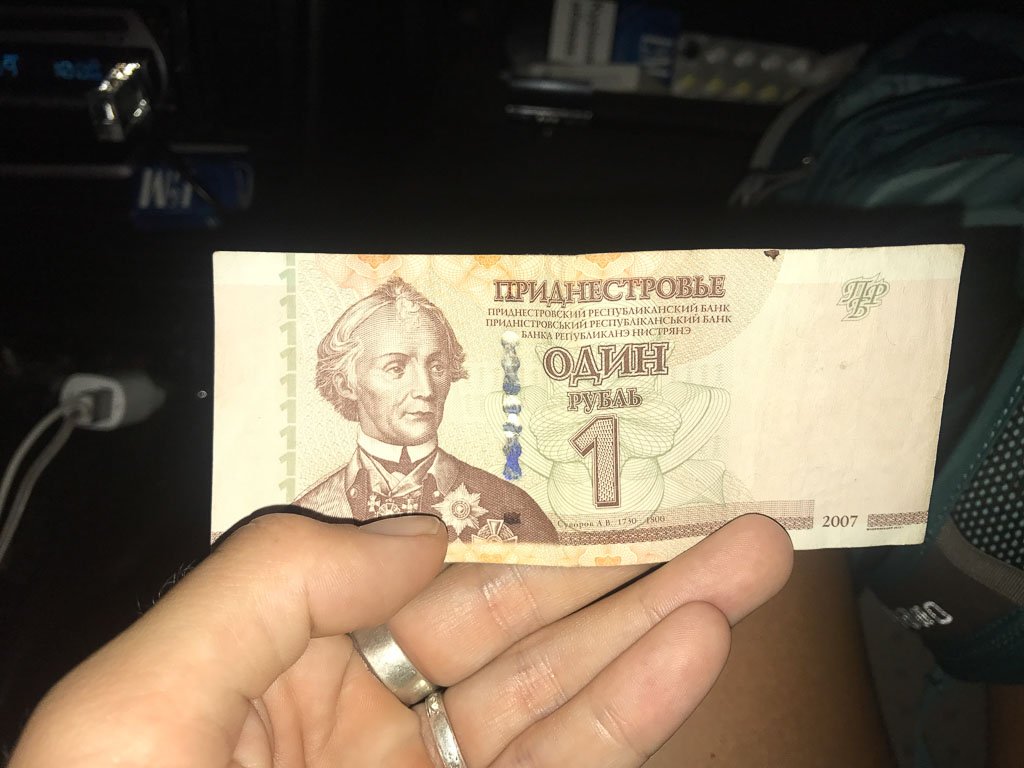
Language
The official language in Moldova is Moldovan, but standard Moldovan is essentially identical to Romanian. Regionally recognized languages include Gaugaz and Ukrainian. Russian is widely understood for the obvious reason that Moldova was a republic of the USSR.
In the region of Transnistria Russian is the main language, but Moldovan and Ukrainian are spoken as well. English is becoming a more popular foreign language among younger Moldovans to learn at school (as well as French), but you will find it helpful to at least know a few words and phrases in Moldovan/Romanian or Russian.
How long to visit Moldova
Moldova is nice and small, making it easy to hit the highlights in a short amount of time. In one week you can easily take in Chișinău, a winery or two, Orheiul Vechi, as well as pay a visit to Transnistria. In two weeks you could add on visits to Soroca and the north of Moldova as well as the Gagauz region.
Best time to visit Moldova
The most popular time to visit Moldova is in July & August with wine tours, hiking, and camping in full swing, but be warned- it’s really hot! May & June, as well as September, can be pleasant months to visit with warm weather.
October tends to start getting chilly but it is a popular time to visit as the National Wine Day Festival kicks off the first weekend of the month. November-March can be downright cold but will give you a chance to see the country blanketed in frost, and surely you’ll be hard-pressed to run into other tourists.
Need more convincing? Read: 10 reasons to visit Moldova
How to get around in Moldova
The most common way to travel around Moldova is by minibus (marshrutka), these are 15 passenger vans that leave when full and you just tell the driver when you want to get off. Buses connect most cities in Moldova as well, they are just a little slower than travel by marshrutka.
It is possible to hire taxis to get around in Moldova. Note that the capital, Chișinău is the main hub for travel in Moldova.
How to get to Moldova
By plane, train, or bus. Flights connect Chișinău with Moscow, Bucharest, Istanbul, Frankfurt, Vienna, Warsaw, and several other European cities. There are daily trains connecting Moldova with Romania (Bucharest) and Ukraine (Odessa & beyond).
By bus, you can reach Moldova from many cities in Ukraine and Romania as well as Russia. The most frequent bus journeys are to Odessa, Brasov, Moscow, and Kiev. Of course, if you have your own vehicle you can drive yourself to Moldova.
Visas
Passport holders from the EU, CIS, USA, Australia, New Zealand, UK, Canada, Japan, S. Korea, Hong Kong, Chile, Ecuador, Israel, Singapore, Seychelles, Malaysia, Turkey, and several non-EU European countries can enter Moldova for up to 90 days visa-free.
Entering Transnistria will require you to obtain a migration card, which you can get on arrival at the border. Read more on the Transnistrian Migration Card here.

Food & Drink
One of the most fun ways of getting to know Moldova’s culture is through its delicious cuisine. Mămăligă is the national dish. It’s a polenta-style dish that accompanies most meals.
Brânză is a must-try locally made salty brine cheese, it’s extra yummy served up in a langos (fried dough). Ghiveci is a locally made stew usually of goat or lamb meat.
Moldovan wine will almost always accompany meals. Purcari winery is known to make the best wine in Moldova, and Cricova is well known for its sparkling wines. Cognac is also a commonly made alcoholic drink in Moldova.
Make sure to try some before you leave! Kvint Distillery in Tiraspol is one of the most well-known cognacs in Moldova/Transnistria. And then there is Kvas (квас in Russian).
Kvas is a fermented beery-fruity drink sold in barrels all over Moldova and countries of the former USSR or those with Slavic influence. It is considered non-alcoholic.

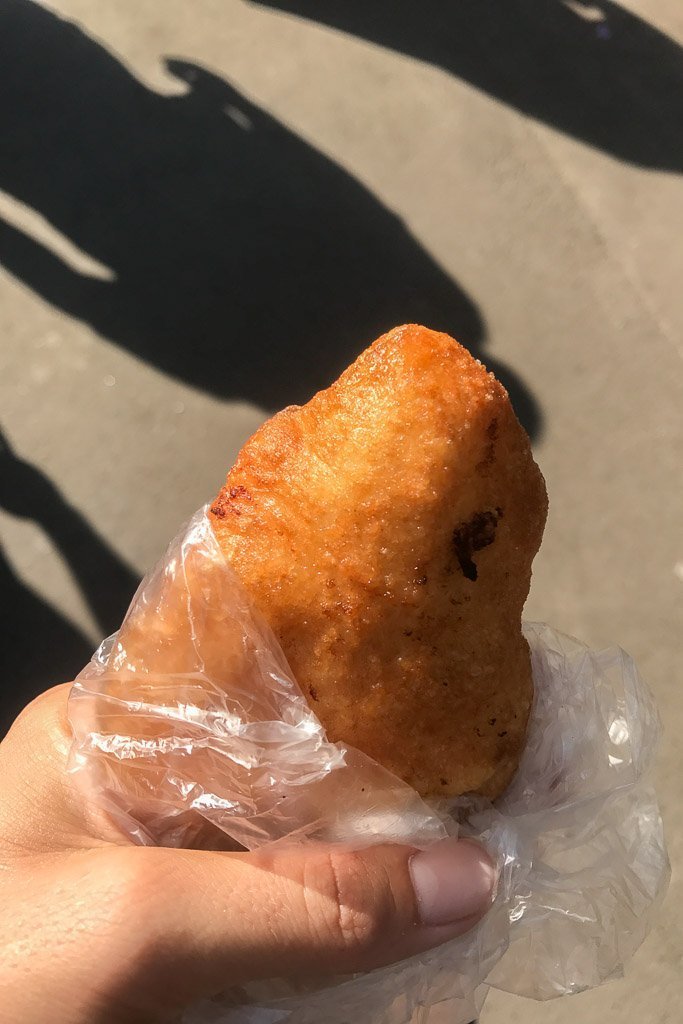

Where to go in Moldova
The most common places for travelers to visit in Moldova are Chișinău, Orheiul Vechi, and Tiraspol (Transnistria). The underground wine cellars of Cricova and Mileștii Mici are also popular destinations and easy day trips from Chisinau. If you have the time and want to veer off the beaten path in Moldova (which is easy!), try the colorful city of Soroca, Comrat- the capital of semiautonomous Gaugazia, and the lavender fields of Cobusca Nouă.
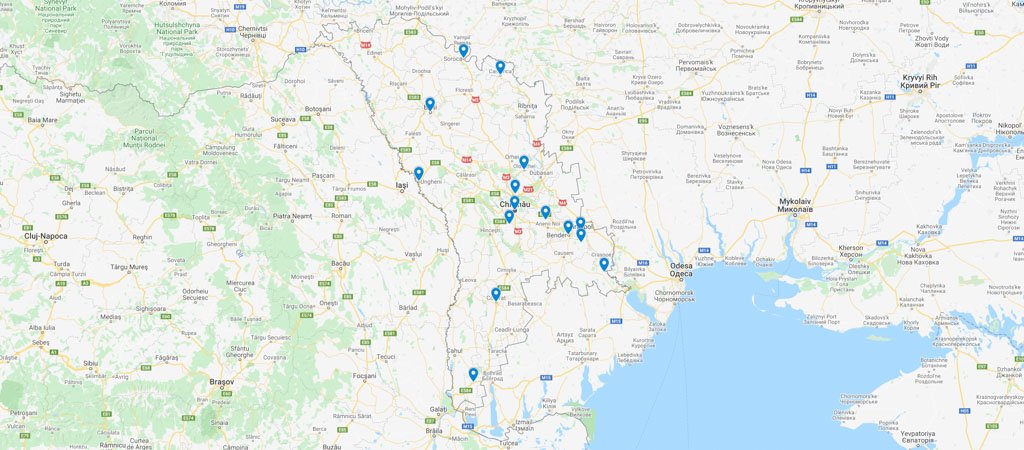
Chișinău & Around
Chișinău is the capital and largest city in Moldova, with the majority of attractions that most tourists to Moldova visit within a day trips distance.
Chișinău
Chișinău has a reputation for being boring, grey, depressing, and dingy. But take the time to explore the city, sample the restaurants & bars, hang out in the leafy green parks, and make some local friends and you’ll find the capital anything but boring. You’ll stumble across many of the city’s attractions along B-dul Ştefan cel Mare (Chișinău’s main avenue) and nearby.
A few things to see while in Chișinău include: Cathedral & Ştefan cel Mare Park, Arc de Triomph, Ciuflea Monastery, Piata Centrala, Rose Valley Park, The Artisan Market, Valea Morilor Park, St. Teodora de la Sihla Church, Riscani Park, Moldova National Opera & Ballet Theater, Botanica Park, National Archaeology & History Museum, Pushkin Museum, Military Museum, and the National Ethnographic & Nature Museum.
Make sure and try out some local foods and hit up some of Chișinău’s best restaurants and bars while you’re in the city. Some tasty restaurants to try out are Vatra Neamului, Propaganda Cafe, and La Placinte.
My favorite spot for quick local foods is from the food stalls at Piata Centrala. Make sure to try the brânză langos and cartofi langos with a glass of cvas.
If you’re in need of a place to stay in Chisinau try the Hostel City Center if you’re on a budget or the Radisson Blu Leogrande Chisinau if you’re looking to splurge.
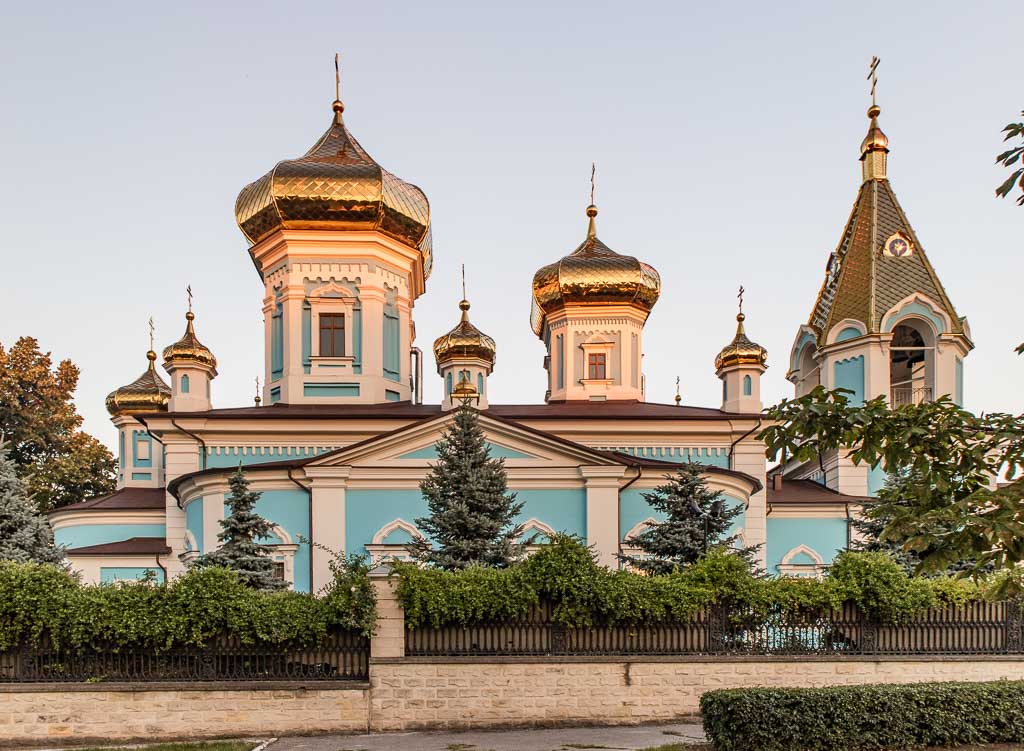
Check Out Chisinau Tours
- 2 Day Chisinau & Moldova Foodie Tour

- Price: $164.19
- 3 hour Chisinau City Group Bike Tour

- Price: $45.00
- Private Half Day City Tour of Chisinau

- Price: $122.51
Orheiul Vechi
Orheiul Vechi is an Eastern Orthodox Monastery built into a limestone cliff along the Raut River, just a short marshrutka ride from Piata Centrala in Chișinău. Make sure and grab a marshrutka signed for Butaceni or Trebujeni, as the ones signed for Orhei, will take you to the town of Orhei which is quite far away. You can easily make a half-day trip of Orheiul Vechi from Chișinău, learn how you can visit for 53 MDL on public transport in my How to Visit Orheiul Vechi Guide.
For those that don't want to deal with the hassle of getting to Orheiul Vechi on their own, you can book a tour of the monastery here.
If you would like to stay in the countryside out here try Villa Roz or Krolichya Ferma in nearby Trebujeni, or Resedinta Rotundu in Butaceni.
Check out my guide on how to get to Orheiul Vechi

Day Trips To Old Orhei
- Tour of Orheiul Vechi & Curchi Monastery

- Price: $185.00
- Walking Tour of Molovata & Old Orhei

- Price: $114.93
- Old Orhei & Kurki Monastry Tour

- Price: $170.50
Cricova
Cricova is a town 15 km north of Chișinău, famous for its underground wine cellar and winery of the same name. The tour of the wine cellars is well worth the trip out here. Tours are about an hour long and run from 10 am to 9 pm for 350 MDL per person, with a special early morning 9 am tour Monday through Friday for only 185 MDL per person.
For an extra 150 MDL each you can bring home a souvenir of 1 bottle of sparkling wine and 1 bottle of red or white wine. Make sure and call ahead of time to schedule your tour at +373 (22) 453659. You can have your hostel/hotel call you a taxi from Chișinău, a taxi should not cost more than 115 MDL each way (expect to pay 400-450 MDL for a taxi roundtrip that waits for you).
If you want to book a full package including transport, cellar tour and tasting click here.
For those wanting to spend the night out here in Cricova, check out the newly opened and stylishly modern Hotel Gio Wine. Vila Family is a great option for those on a smaller budget.
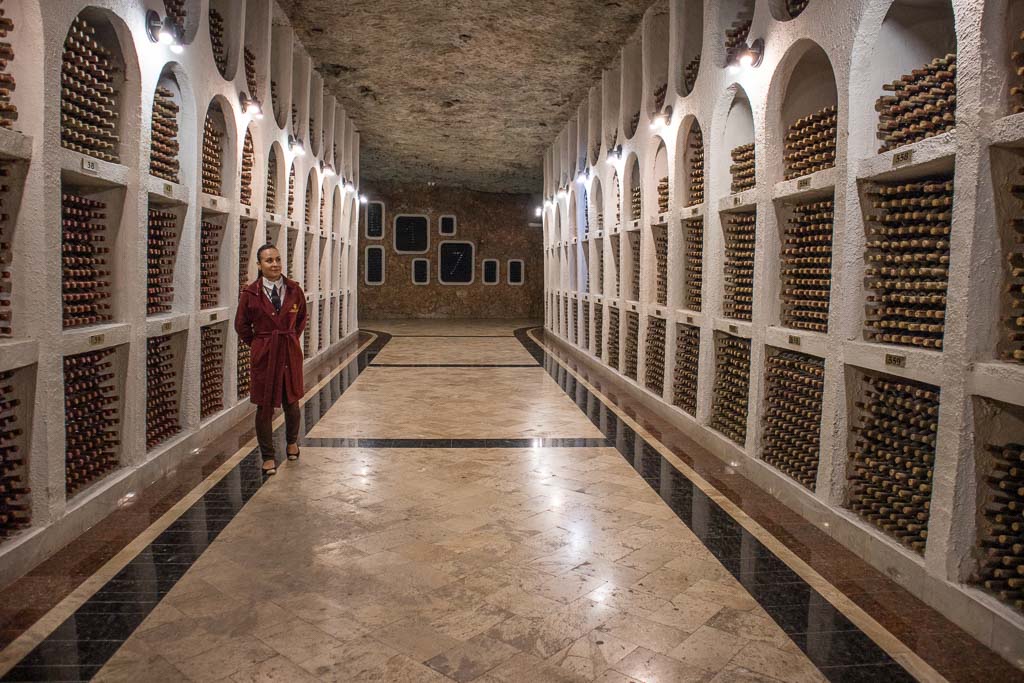
Cricova Wine Tours
- Cricova Tour from Chisinau

- Price: $66.94
- Chisinau Tour + Cricova Winery

- Price: $119.98
- One Day Bike Tour to Cricova

- Price: $185.00
Mileștii Mici
Mileștii Mici is a former mine turned Guinness World Record largest underground wine cellar. Mileștii Mici is located in Ialoveni, about 11 km southwest of Chișinău.
The hours are M-F 9 am- 5 pm, Sat. Sun. and holidays after 5 pm. A guided tour will cost 200 MDL per person on weekdays, and 300 MDL per person on weekends and holidays. Wine tastings start at 310 MDL per person and include a guided tour of the cellars.
Call +373 22 382 333 to schedule a tour or tasting.
If you want to book a full package including transport, cellar tour and tasting click here.
Milesti Mici Tours
- Bike Tour to Milestii Mici

- Price: $185.00
- Milestii Mici Tour

- Price: $64.41
- Milestii Mici + Tiraspol

- Price: $236.18
Cobusca Nouă
Cobusca Nouă is a village just 35 km southeast of Chișinău known for its lavender crops that look like all those beautiful photos you see in France, just better because you'll likely have them to yourselves! If you're looking to stay close to the village you can stay in nearby Anenii Noi.
Northern Moldova
If Moldova is rarely visited, then Northern Moldova is about as far off the beaten path as you can get in Europe. The lovely cities of Bălți and Soroca are two of the main draws to this region of Moldova. Of course, there are numerous wineries in the region as well.
Bălți
Moldova's second-largest city after Chișinău, and nicknamed the 'Northern Capital'. Highlights in Bălți include St. Nicolas Church, Children's Park, Ştefan cel Mare Monument, and the Ethnographic Museum. A good option to sleep is at the Elite Hotel.
Soroca
The main attraction in Soroca is the Soroca Fortress built between the 14th and 16th centuries. Other attractions include the Candle of Gratitude and the Museum of Soroca History and Ethnography.
Another feature of the city that draws in tourists is Gypsy Hill. Roma people (an ethnic group often referred to as Gypsies) have built elaborate and colorful mansions along this hilltop with the influence of famous buildings like the Bolshoi Theatre and St. Peter's Basilica. Soroca sits perched on the banks of the Dniester River.
Try Central Hotel if you're planning to spend the night in Soroca.
Ungheni
Ungheni is known to be one of Moldova's most beautiful cities. Ungheni sits rights on the border with Romania, only separated from the Romanian city of Ungheni by the Prut River. Make sure to pay a visit to Frances Park and the numerous churches scattered about the city.
Gaugazia & Southern Moldova

Comrat/Komrat
The capital of Gagauzia. Highlights of Comrat include Lenin's Square, Cathedral of St. John Baptist, Gagauz History Museum, Gaugaz Cultural Museum, Gagauz Bazaar, Gaugazian Art Gallery, and the Gagauz National Theatre. Comrat will be the easiest place to be situated in order to explore the rest of Gagauzia.
For accommodation, check out Caral.
Purcari
The main attraction in Purcari is, of course, Chateau Purcari Winery. Boating, bicycling, fishing, and hiking are a few activities to do in the area aside from the winery. To arrange winery tours call +373 60 121 221.
If you'd like to spend the night at the winery set in the Southern Moldovan countryside near the Dniester River you can book a stay here.
Vulcănești
The far southwestern exclave of Gagauzia. Vulcanesti is rarely visited. Check out the House of Culture as well as several monuments, churches, and memorials scattered about the town.
Transnistria/Приднестровская Молдавская Республика
Ah Transnistria (Pridnestrovie is the name the territory has given itself), the unusual little slice of Soviet times alive and well on the banks of the Dniester River squished between Moldova and Ukraine. Most who do visit Transnistria do so as a day trip from Chișinău, or as a stopover while transiting from Chișinău to Odessa.
It is possible to get a 3-day migration card if you do plan to spend a night or two in Transnistria. And don't worry, getting into and out of Transnistria isn't as difficult as it used to be, and being asked for bribes and/or hassled is getting less and less common. To find out how to visit Transnistria, read on here.
Tiraspol/Тирасполь
Tiraspol is the official capital of the unofficial and unrecognized self-declared country. If you've traveled much of the former USSR, then Tiraspol probably won't be as shocking to you. But for those that Moldova and Transnistria are their first times delving into former Soviet nations it may be a little, well.. different.
Statues of Lenin and very Soviet-looking architecture are a few of the peculiarities that draw foreigners in. A few of the attractions of Tiraspol include; The House of Soviets, Kirov Park, Kvint Distillery, Eternal Flame & Transnistrian War Memorial, walking along the Dniester River, Church of Nativity, Zelony Bazaar, and the Tiraspol National Museum.
Tiraspol even has a skatepark. You can find most of the main attractions in Tiraspol on 25 October Street. Read more about what to do and see, as well as how to get to Tiraspol in my Transnistria Travel Guide.
Grab a marshrutka from Chișinău's Piata Centrala bound for Tiraspol (the sign in the window may also show Тирасполь). A seat will set you back 37 MDL and takes about an hour. The marshrutka will stop at the 'border' for you to get a migration card. Note that marshrutkas bound for Chișinău from Tiraspol cost 68 MDL per seat.
A few accommodations to check out are: Tiraspol Hostel, Like Home Hostel, Old Tiraspol, and City Club Hotel.
For those wanting to make a hassle-free trip to Transnistria and Tiraspol check out this tour from Chișinău.
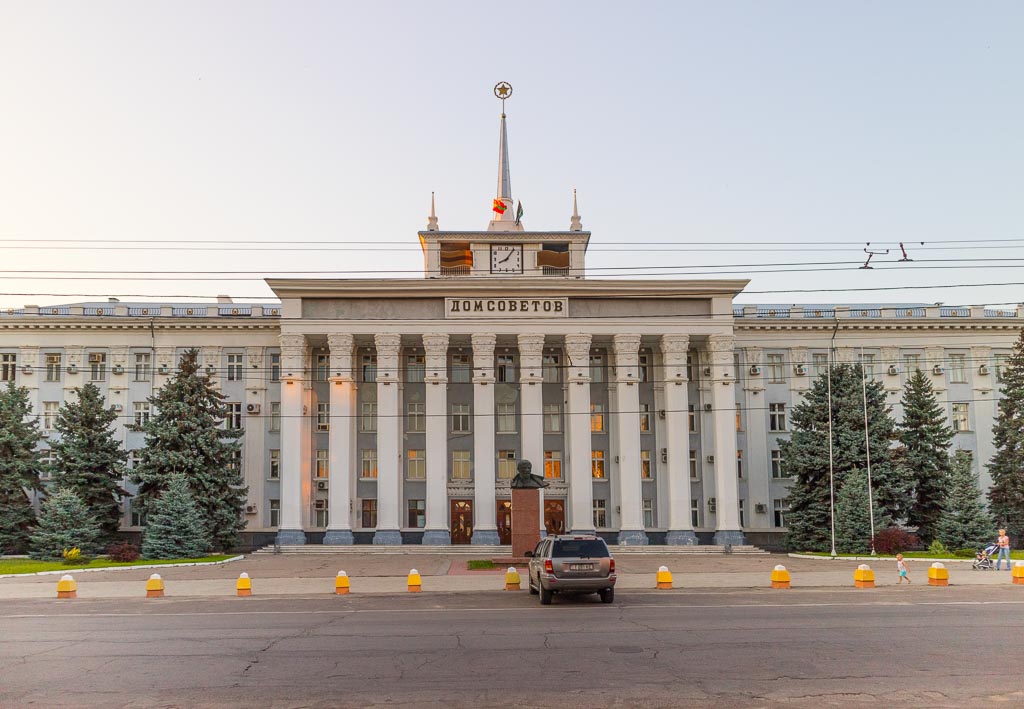
Transnistria Tours
- Private Tour of Tiraspol from Chisinau

- Price: $217.23
- Cricova Winery and Tiraspol Tour

- Price: $247.54
- Day Trip to Transnistria from Odessa

- Price: $290.48
Bendery/Бендеры
Bendery, also known as Tighina. The main highlight for visitors to Bendery is the Ottoman Bendery Fortress. Other attractions to check out in Bendery are Tighina War Memorial & Park, and the Church of Joaquim.
Hotel Prietenia is a good option for those wanting to stay in Bendery, however, Tiraspol is right across the Dniester River if you'd like more options.
Looking for a tour of Bendery and Tiraspol? Check out this day tour here!
Chițcani/Кицканы
Chițcani is very near to Tiraspol. The main site that most people come here to visit is the Noul Neamt Monastery.
Camanca/Каменка
Camanca is located about 2.5 hours north of Tiraspol by car. The main draw is to visit the Sanatorii Dniester, a Soviet-style spa.
Start planning: The Transnistria travel guide
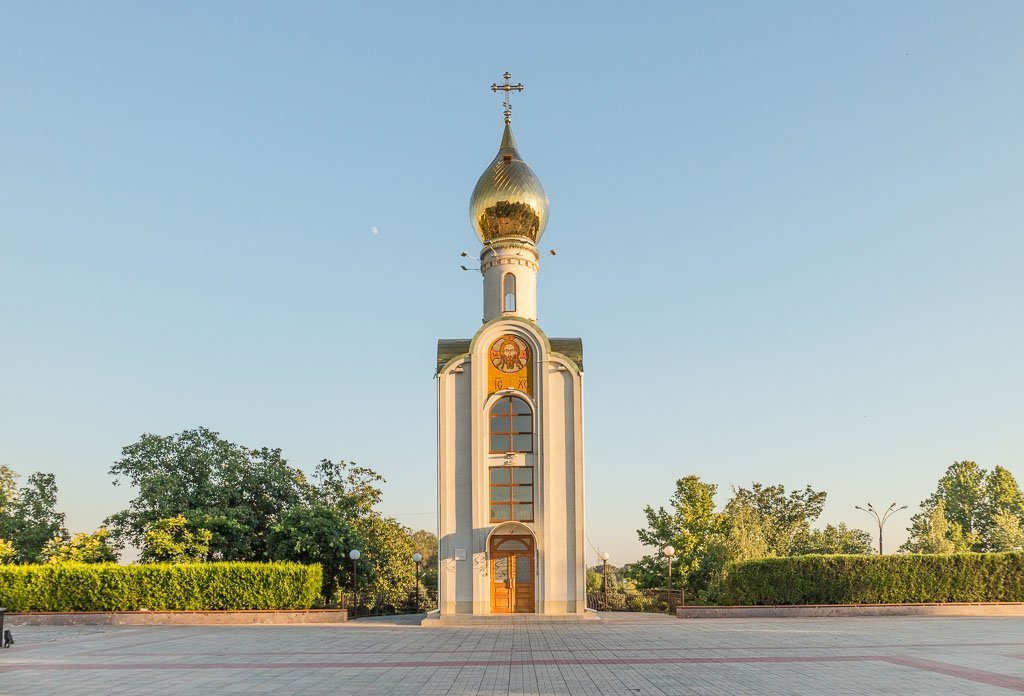
Moldova Travel Budget
Moldova is one of the cheapest destinations to visit in Europe, especially with the opening up of several hostels in the country in the last few years. If you're looking to keep costs low try staying in hostels, or even Couchsurfing, eating at bazaars and local eateries, traveling by marshrutka, and trying to self-tour as much as possible.
$25/410 MDL per day
Staying in hostels or couchsurfing, dining at local eateries, traveling by marshrutka.
$50/825 MDL per day
Staying in midrange hotels, dining in midrange restaurants, taking a winery tour here and there.
$100/1655 MDL+ per day
Staying in comfortable hotels, taking tours, eating in finer restaurants.
What to pack
Traveling in Moldova won't require any special items. Summer can get stifling hot so I'd recommend a lifestraw water bottle to reduce your plastic waste.
For women, make sure and pack a scarf, because you will need to cover your hair when entering orthodox churches.
You can also pick up a copy of Lonely Planet's Eastern Europe if you're looking for a travel guide, but it is very, very limited. I'd recommend just purchasing the Moldova chapter in ebook form if you do want the guide unless you plan to travel more of Eastern Europe.
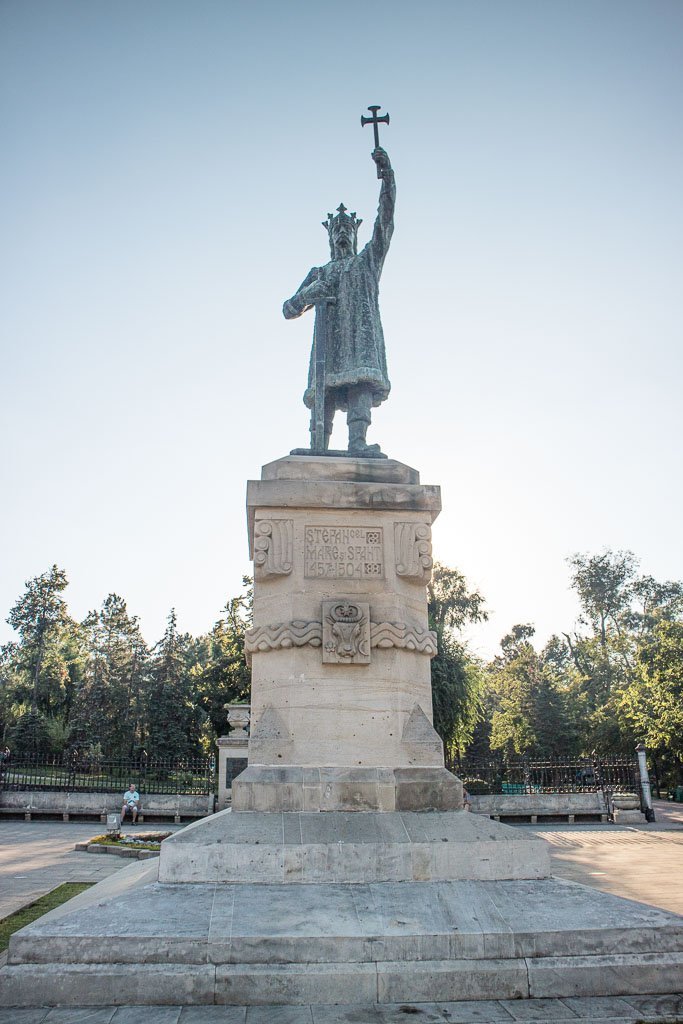
Have Any Questions About This Moldova Travel Guide?
Ask any of your Moldova travel-related questions in the comments section below.
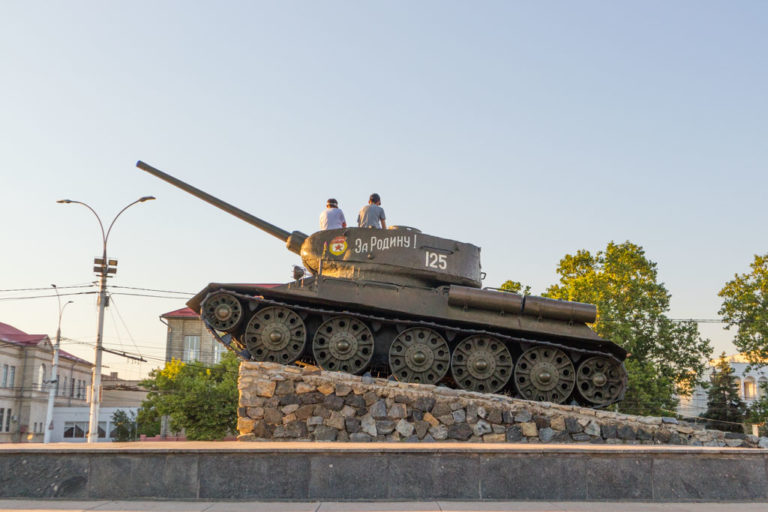
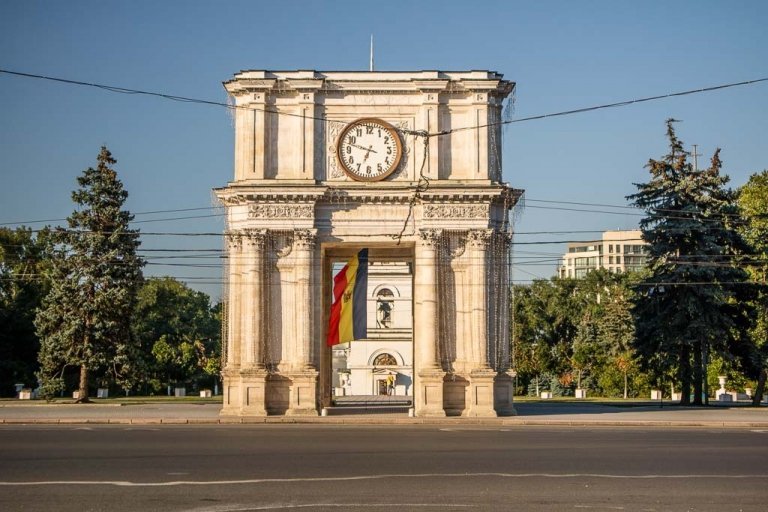

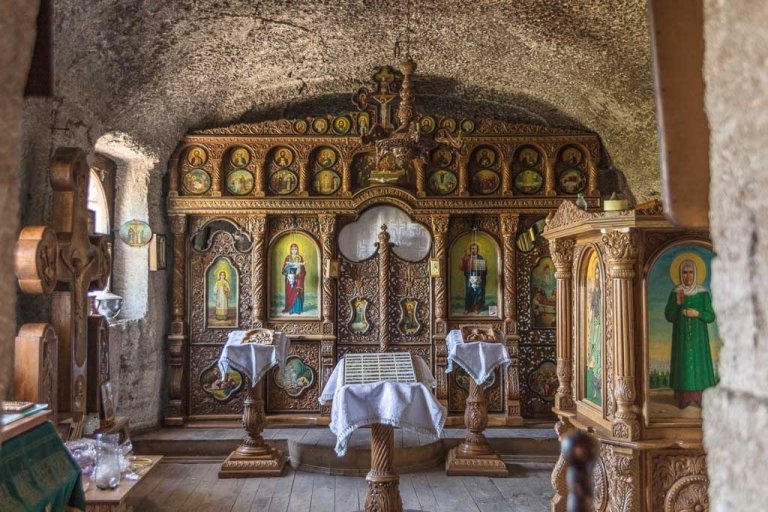
Thanks for this article. I am going to Moldova tomorrow for four days and this article helped me a lot. 🙂
Good to hear, I hope you enjoy Moldova!
what an excellent overview! thank you. i’m debating a visit in may or june and this has given me some nice insight.
Thanks, good to hear! I hope you enjoy if you make it to Moldova
Thank you for the post. The section of Chisinau was very intesting, i will visit it soon my self. The visa info was also handy.
I hope you enjoy Moldova, I always have a great time when I return